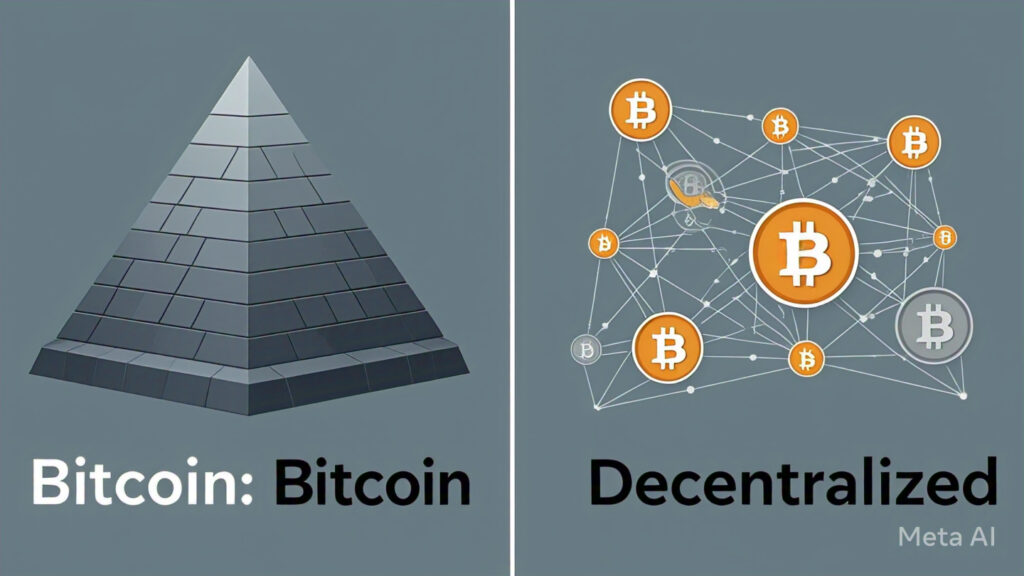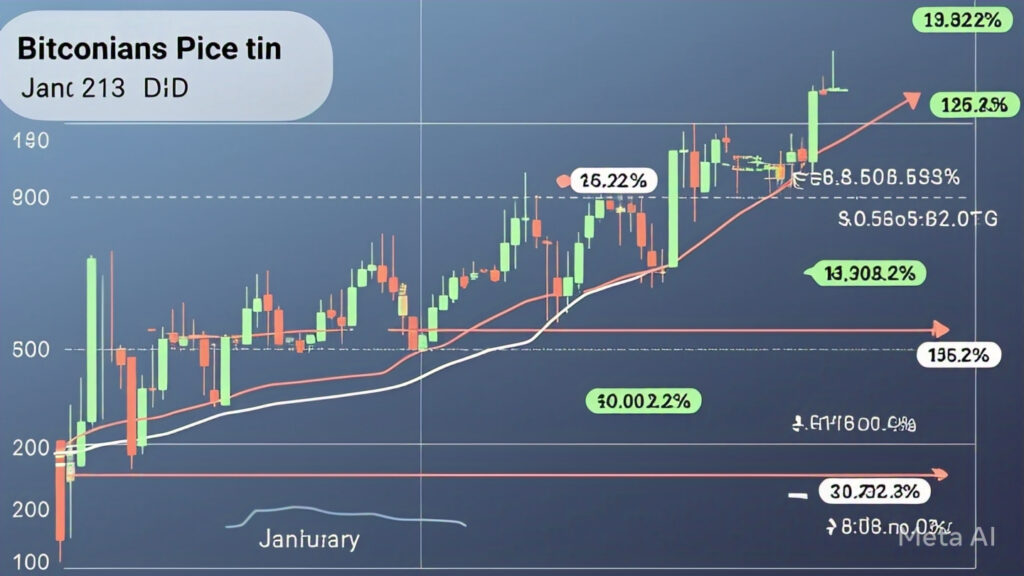Introduction
Bitcoin (BTC) is a decentralized digital currency, the first and most well-known cryptocurrency in the world. Launched in 2009 by an anonymous entity known as Satoshi Nakamoto, Bitcoin revolutionized the concept of money and financial transactions. Unlike traditional currencies issued by central banks, Bitcoin operates on a technology called blockchain, enabling peer-to-peer transactions without intermediaries.

The Genesis of Bitcoin
Satoshi Nakamoto and the Whitepaper
Bitcoin was introduced to the public in 2008 through a white paper titled “Bitcoin: A Peer-to-Peer Electronic Cash System,” authored by Satoshi Nakamoto. Nakamoto’s identity remains a mystery, adding to the mystique surrounding Bitcoin’s origins. The whitepaper outlined a system for electronic transactions without relying on trust, addressing the issues of double-spending and the need for central authorities.
The Genesis Block
On January 3, 2009, the first Bitcoin block, known as the genesis block, was mined. This marked the official launch of the Bitcoin network. The genesis block contained the message: “The Times 03/Jan/2009 Chancellor on brink of second bailout for banks,” potentially a timestamp and commentary on the financial crisis of the time.

How Bitcoin Works
Blockchain Technology
Bitcoin operates on a blockchain, a distributed, public ledger that records all Bitcoin transactions. The blockchain is a chronological sequence of blocks, each containing a batch of transactions. This technology ensures transparency and security, as every transaction is verifiable and immutable.
Transactions and Wallets
Bitcoin transactions involve the transfer of value between Bitcoin wallets. Each wallet has a public key (like a bank account number) and a private key (like a password). The private key is used to sign transactions, proving ownership of the Bitcoins being sent.
Mining
Mining is the process by which new Bitcoins are created and transactions are verified. Miners use powerful computers to solve complex mathematical problems. The first miner to solve the problem adds a new block of transactions to the blockchain and receives a reward in newly minted Bitcoins and transaction fees.

The SHA-256 Hashing Algorithm
Bitcoin uses the SHA-256 hashing algorithm to encrypt data stored in blocks. This algorithm transforms transaction data into a 64-digit hexadecimal number, ensuring the integrity and security of the blockchain.
Key Features of Bitcoin
Decentralization
Bitcoin is decentralized, meaning no single entity controls the network. This eliminates the need for intermediaries like banks and payment processors, giving users greater control over their funds.
Limited Supply
There will only ever be 21 million Bitcoins. This limited supply makes Bitcoin a scarce asset, potentially contributing to its value as a store of value. The supply is algorithmically controlled, with the block reward halving approximately every four years.
Security
Bitcoin’s cryptographic nature makes it fundamentally more secure than traditional payment systems. Transactions are irreversible, and the network has proven resilient against hacking attempts.
Transparency
All Bitcoin transactions are publicly recorded on the blockchain, providing a high level of transparency. However, transactions are pseudonymous, meaning they are associated with Bitcoin addresses rather than personal identities.

Bitcoin Mining in Detail
The Mining Process
Bitcoin mining is a competitive process where miners race to find a solution to a cryptographic puzzle. This solution, called a “hash,” must meet specific criteria. Miners repeatedly hash block data with a “nonce” (a random number) until they find a valid hash.
Mining Hardware and Energy Consumption
As the Bitcoin network has grown, mining has become increasingly competitive, requiring specialized hardware called ASICs (Application-Specific Integrated Circuits). Bitcoin mining consumes a significant amount of electricity, leading to environmental concerns.
Mining Pools
To increase their chances of earning rewards, many miners join mining pools, combining their computational power. Rewards are then distributed among the pool members based on their contribution.

Bitcoin’s History and Price Volatility
Early Years
Bitcoin’s early years were characterized by low value and limited adoption. However, it gradually gained attention, experiencing its first significant price increase in 2010.
Price Surges and Crashes
Bitcoin’s price has been highly volatile, with periods of rapid growth followed by sharp declines. These fluctuations are influenced by factors such as market sentiment, regulatory news, and technological developments.
Key Milestones
Bitcoin reached significant milestones, including surpassing $1,000 in 2013, reaching highs near $20,000 in 2017, and then experiencing a major bull run in 2021, reaching nearly $69,000. It has since experienced further volatility and reached new all-time highs above $100,000 in late 2024 and early 2025.

Bitcoin Regulation
Varying Approaches Across Jurisdictions
The regulatory treatment of Bitcoin varies significantly across different countries. Some countries have embraced Bitcoin, developing clear regulatory frameworks, while others have imposed restrictions or outright bans.
Key Regulatory Concerns
Regulatory concerns surrounding Bitcoin include anti-money laundering (AML), counter-terrorism financing (CTF), investor protection, and taxation.
The Future of Bitcoin Regulation
The future of Bitcoin regulation remains uncertain, but increased regulatory clarity is generally seen as crucial for mainstream adoption.

Bitcoin’s Future Prospects
Potential Use Cases
Bitcoin’s potential use cases extend beyond a store of value and medium of exchange. It could play a role in decentralized finance (DeFi), cross-border payments, and various other applications.
Challenges and Opportunities
Bitcoin faces challenges such as scalability, energy consumption, and regulatory uncertainty. However, it also presents opportunities for financial innovation and greater financial inclusion.
Expert Opinions and Predictions
Expert opinions on Bitcoin’s future vary widely. Some believe it will continue to grow in value and adoption, while others are more cautious, citing its volatility and regulatory risks.

Securing Your Bitcoin
Wallet Security
Securing your Bitcoin wallet is crucial to prevent theft. Best practices include using strong, unique passwords, enabling two-factor authentication, and storing private keys offline in a hardware wallet.
Backup and Encryption
It’s essential to back up your Bitcoin wallet and encrypt your backups. Multiple backups in different secure locations are recommended.
Being Cautious with Online Services
Be wary of online services that store your Bitcoin, as they are vulnerable to security breaches. Choose reputable exchanges and wallets, and always prioritize security.

Conclusion
Bitcoin, as the original cryptocurrency, has paved the way for a new era of digital finance. Its decentralized nature, limited supply, and secure technology have made it a groundbreaking innovation. While it faces challenges, its potential to transform the financial landscape remains significant. Understanding Bitcoin’s origins, technology, and key features is essential for anyone interested in the future of money and finance.
I hope this article meets your requirements! Let me know if you would like any revisions or further information.


